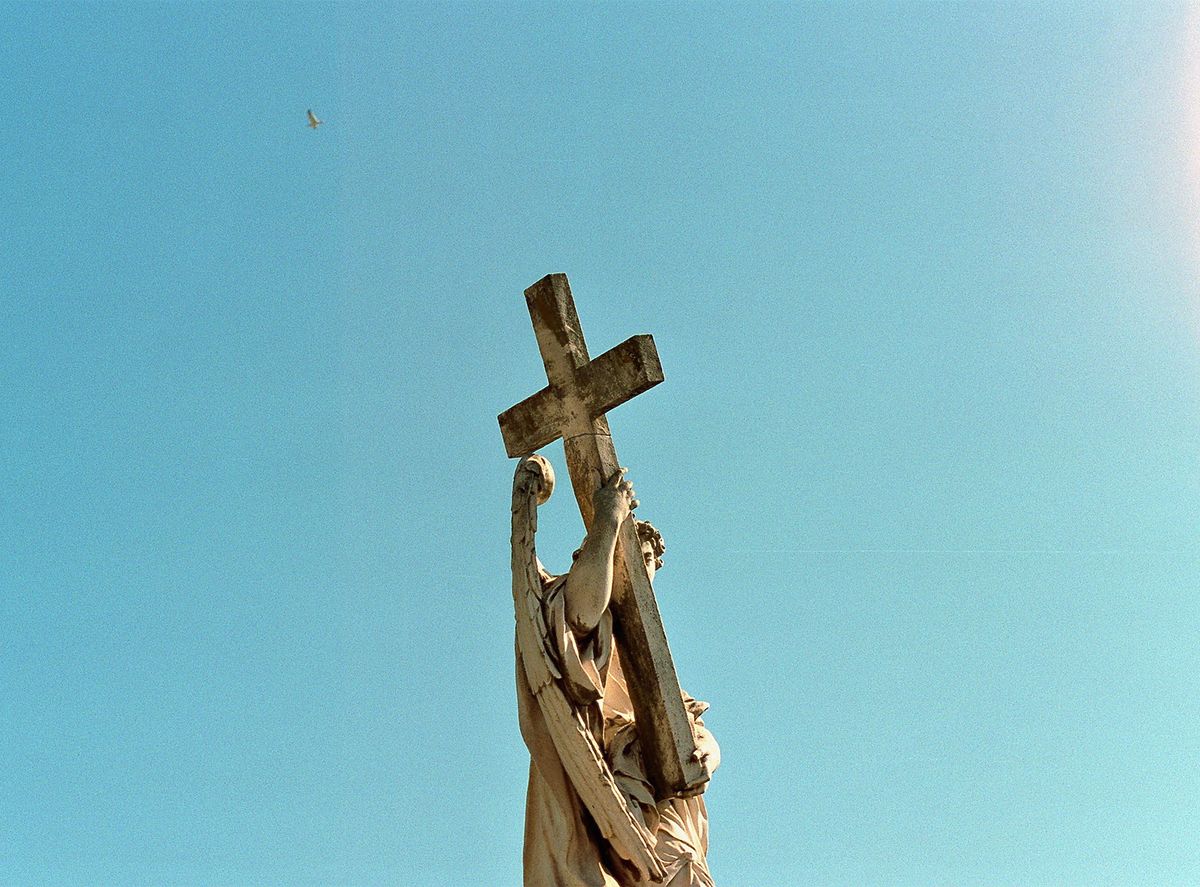OHF Weekly - A Lynching in Central Florida
|
Older messages
Oppression? Or Freedom?
Tuesday, November 5, 2024
Now we wait. OHF WEEKLY Oppression? Or Freedom? Now we wait. By Clay Rivers • 5 Nov 2024 View in browser View in browser 💛 Hey Reader, Regardless of the outcome of today's election, I want to put a
On Color-blindness
Thursday, October 31, 2024
The myth of not seeing ethnic and cultural differences OHF WEEKLY On Color-blindness The myth of not seeing ethnic and cultural differences By Clay Rivers • 31 Oct 2024 View in browser View in browser
The Real Reason You Can’t Understand the Black Experience in America
Sunday, October 27, 2024
The surprising reason why some white people can easily grasp what Black Americans experience and others find it nearly impossible. OHF WEEKLY The Real Reason You Can't Understand the Black
Spare Us the Rebranding of Fascism, Love Like Jesus Told You
Thursday, October 24, 2024
From OHF WEEKLY Vol. 5 No. 7. On evangelicals' sell-out of their faith in the biggest power grab in American history. OHF WEEKLY Spare Us the Rebranding of Fascism, Love Like Jesus Told You From
The Two Steps to Getting Someone on the Anti-Racism Express
Monday, October 21, 2024
How to get people to acknowledge that racial inequities exist and that it's wrong. OHF WEEKLY The Two Steps to Getting Someone on the Anti-Racism Express How to get people to acknowledge that
You Might Also Like
The World’s 50 Best Restaurants is launching a new list
Monday, March 3, 2025
A gunman opened fire into an NYC bar
Solidarity Or Generational Theft?
Monday, March 3, 2025
How should housing folks think about helping seniors stay in their communities? ͏ ͏ ͏ ͏ ͏ ͏ ͏ ͏ ͏ ͏ ͏ ͏ ͏ ͏ ͏ ͏ ͏ ͏ ͏ ͏ ͏ ͏ ͏ ͏ ͏ ͏ ͏ ͏ ͏ ͏ ͏ ͏ ͏ ͏ ͏ ͏ ͏ ͏ ͏ ͏ ͏ ͏ ͏ ͏ ͏ ͏ ͏ ͏ ͏ ͏ ͏ ͏ ͏ ͏ ͏ ͏ ͏ ͏ ͏ ͏ ͏
The Banality of Elon Musk
Monday, March 3, 2025
Or, the world we get when we reward thoughtlessness ͏ ͏ ͏ ͏ ͏ ͏ ͏ ͏ ͏ ͏ ͏ ͏ ͏ ͏ ͏ ͏ ͏ ͏ ͏ ͏ ͏ ͏ ͏ ͏ ͏ ͏ ͏ ͏ ͏ ͏ ͏ ͏ ͏ ͏ ͏ ͏ ͏ ͏ ͏ ͏ ͏ ͏ ͏ ͏ ͏ ͏ ͏ ͏ ͏ ͏ ͏ ͏ ͏ ͏ ͏ ͏ ͏ ͏ ͏ ͏ ͏ ͏ ͏ ͏ ͏ ͏ ͏ ͏ ͏ ͏ ͏ ͏ ͏ ͏ ͏
“In life I’m no longer capable of love,” by Diane Seuss
Monday, March 3, 2025
of that old feeling of being / in love, such a rusty / feeling, ͏ ͏ ͏ ͏ ͏ ͏ ͏ ͏ ͏ ͏ ͏ ͏ ͏ ͏ ͏ ͏ ͏ ͏ ͏ ͏ ͏ ͏ ͏ ͏ ͏ ͏ ͏ ͏ ͏ ͏ ͏ ͏ ͏ ͏ ͏
Your dishwasher isn’t a magician
Monday, March 3, 2025
— Check out what we Skimm'd for you today March 3, 2025 Subscribe Read in browser Together with brad's deals But first: 10 Amazon Prime benefits you may not know about Update location or View
My 10 year anniversary of being single: exclusive extract from my book
Monday, March 3, 2025
Single: Living a Complete Life on Your Own Terms is out now ͏ ͏ ͏ ͏ ͏ ͏ ͏ ͏ ͏ ͏ ͏ ͏ ͏ ͏ ͏ ͏ ͏ ͏ ͏ ͏ ͏ ͏ ͏ ͏ ͏ ͏ ͏ ͏ ͏ ͏ ͏ ͏ ͏ ͏ ͏ ͏ ͏ ͏ ͏ ͏ ͏ ͏ ͏ ͏ ͏ ͏ ͏ ͏ ͏ ͏ ͏ ͏ ͏ ͏ ͏ ͏ ͏ ͏ ͏ ͏ ͏ ͏ ͏ ͏ ͏ ͏ ͏ ͏ ͏ ͏ ͏
Selena Gomez Shut Down The Oscars Red Carpet In This Spectacular Gown
Monday, March 3, 2025
10/10. The Zoe Report Daily The Zoe Report 3.2.2025 Selena Gomez Shut Down The Oscars Red Carpet In A Spectacular Gown (Red Carpet) Selena Gomez Shut Down The Oscars Red Carpet In A Spectacular Gown 10
David Beckham Opens Up About Turning 50, Finally Mastering Pullups, and Feasting on Jellied Eels
Sunday, March 2, 2025
View in Browser Men's Health SHOP MVP EXCLUSIVES SUBSCRIBE THIS WEEK'S MUST-READ David Beckham Opens Up About Turning 50, Finally Mastering Pullups, and Feasting on Jellied Eels David Beckham
'Walk on the Wild Side' Could Have Been a Contender
Sunday, March 2, 2025
Instead, its "wild" women remained caged by Hollywood ͏ ͏ ͏ ͏ ͏ ͏ ͏ ͏ ͏ ͏ ͏ ͏ ͏ ͏ ͏ ͏ ͏ ͏ ͏ ͏ ͏ ͏ ͏ ͏ ͏ ͏ ͏ ͏ ͏ ͏ ͏ ͏ ͏ ͏ ͏ ͏ ͏ ͏ ͏ ͏ ͏ ͏ ͏ ͏ ͏ ͏ ͏ ͏ ͏ ͏ ͏ ͏ ͏ ͏ ͏ ͏ ͏ ͏ ͏ ͏ ͏ ͏ ͏ ͏ ͏ ͏ ͏ ͏ ͏
The Best Sites to Find Affordable Brand Name Dupes
Sunday, March 2, 2025
Common Bathroom Repairs That Are Actually Really Easy. From furniture to perfume, cheap dupes—or “duplicates”—are having a moment. Here are the tools that make them easier to find. Not displaying
